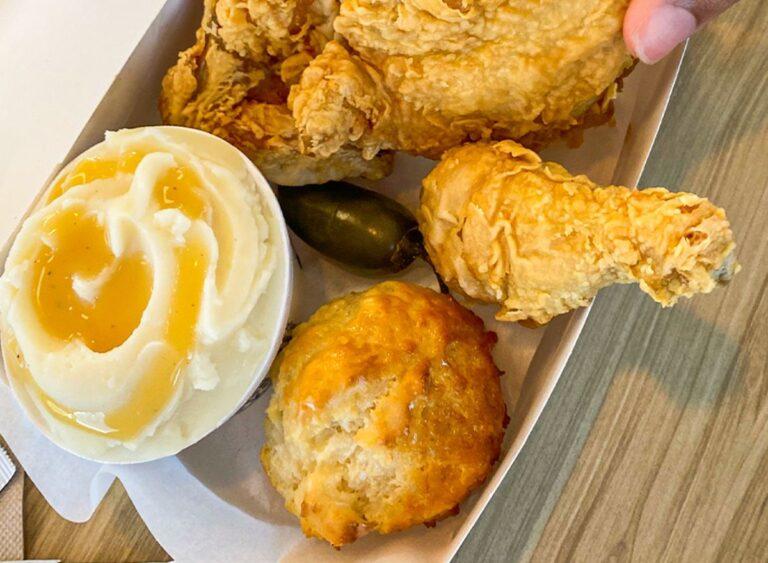We’ve probably never been more aware of how the groceries we choose affect our health. Who among us hasn’t tried to resist the lure of the cake aisle? The connection between food and wellbeing seems particularly salient when it comes to gut health. And, it turns out, by making simple changes to our diet, we can start to take care of our tummies. Try popping some of the items listed below into your shopping basket and see if you notice a difference.
Potatoes
Pile plenty of potatoes into your shopping bag, but resist peeling them because their skins contain fibre. Fibre helps to maintain a healthy digestive system, passing through our small intestine without being broken down. The UK government recommends we aim for 30g of fibre a day, although British adults manage to eat only about 19g on average. Potatoes are also a source of resistant starch, a form of starch that can’t be digested in the small intestine and so is classified as a type of fibre. This, too, may aid gut health.
Wholegrains
Choosing wholegrain varieties of bread and pasta is an easy way of boosting your fibre intake. Unlike the refined grains used in white bread and pasta, wholegrains include the bran, the fibre-rich outer layer that gets stripped when grain is refined. Remember to check the label on any packets you buy so you can be sure about the ingredients, fibre content and nutritional values. As a guide, a product claiming to be a source of fibre should contain at least 3g of fibre per 100g or at least 1.5g of fibre per 100 kcal, while a product claiming to be high fibre should contain double those figures.
Wheat bran
A daily intake of 10g of wheat-bran fibre is known to support your gut health by helping to accelerate the transit of food through your intestines. An easy way to boost your intake is by eating breakfast cereals high in wheat-bran fibre, such as the Kellogg’s high-fibre range, which includes Bran Flakes, All-Bran Original and Fruit & Fibre.
Oats
These are another handy breakfast option. Oats are known to provide a type of fibre often referred to as soluble fibre. This fibre dissolves in water and forms a gel in the gut, which can beneficially impact digestion and metabolism. Remember, oats aren’t just used to make porridge but are the basis of muesli, oatcakes and oat bread.
Leafy vegetables
Parents down the generations have told children to “eat up your greens”, and it turns out they were right. For example, broccoli and kale can provide a source of fibre.
Probiotics and fermented foods
We can enrich the diversity of our gut microbiome by eating probiotics – technically defined as live bacteria that, when consumed in a viable form and adequate amounts, are beneficial to health. Kefir, a fermented milk drink, is an example of a food providing a probiotic source. Such foods may complement a fibre-rich diet, in the context of gut health. Other fermented foods such as certain yoghurts, sauerkraut, miso and kimchi are examples of probiotic sources.
Bulgur wheat
If you’re bored of potatoes but need something on the side, this wholewheat grain is your friend. It comes in four sizes, from fine to very coarse, and is great as a basis for salads. Mix it with anything from tomatoes and cucumber to parsley and lettuce, for a tasty side dish.
Pulses
These come in all sorts of varieties, with some of the most familiar being lentils, chickpeas and kidney beans. All three contain fibre, as well as resistant starch, and can be added to soups, stews, curries or salads.
Nuts and seeds
Pumpkin, sunflower and flax seeds are handy if you’re looking for a fibre snack while on the go. Nuts and seeds can be sprinkled on stir fries, blitzed into curries, stirred into homemade cereal bars, or added to breakfast cereals. And don’t forget nut butters, which come in varieties such as cashew and almond as well as peanut.
Assorted fruits
If you fancy something sweeter, remember that plenty of fruits contain fibre, such as strawberries, blackberries and pomegranates. Avocados might be savoury but they are a fruit, and another good option.
Bananas
When green, these are a good source of resistant starch. As a rule of thumb, the greener the banana, the more resistant starch it contains, so try to eat them before they turn completely yellow.
Prebiotics
Fibre reaches the large intestine undigested. Once there, some types of fibre become “food” for the good bacteria in our gut. These types of fibre are referred to as prebiotics. Small amounts can be found in foods such as chicory root, onions, garlic and artichokes. But you can also opt for foods with added prebiotic fibre.
This content was originally published here.



















